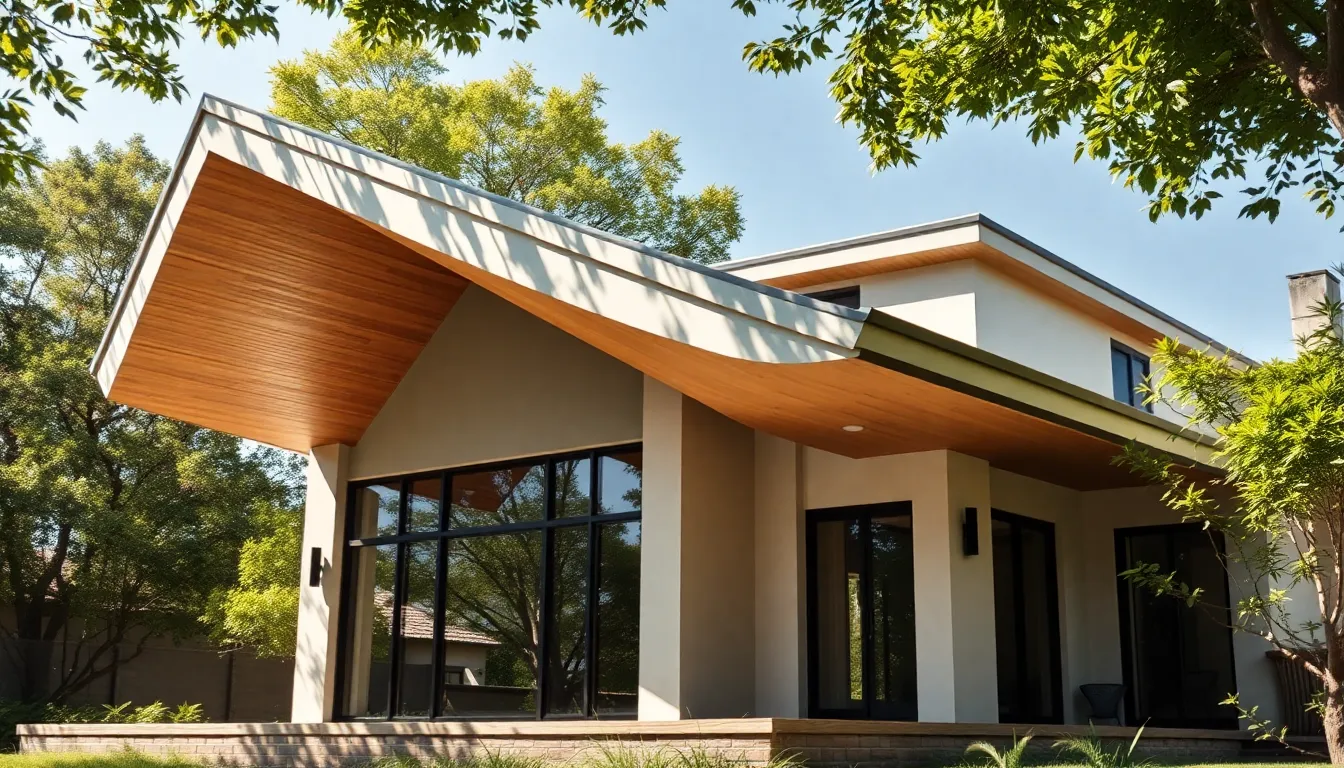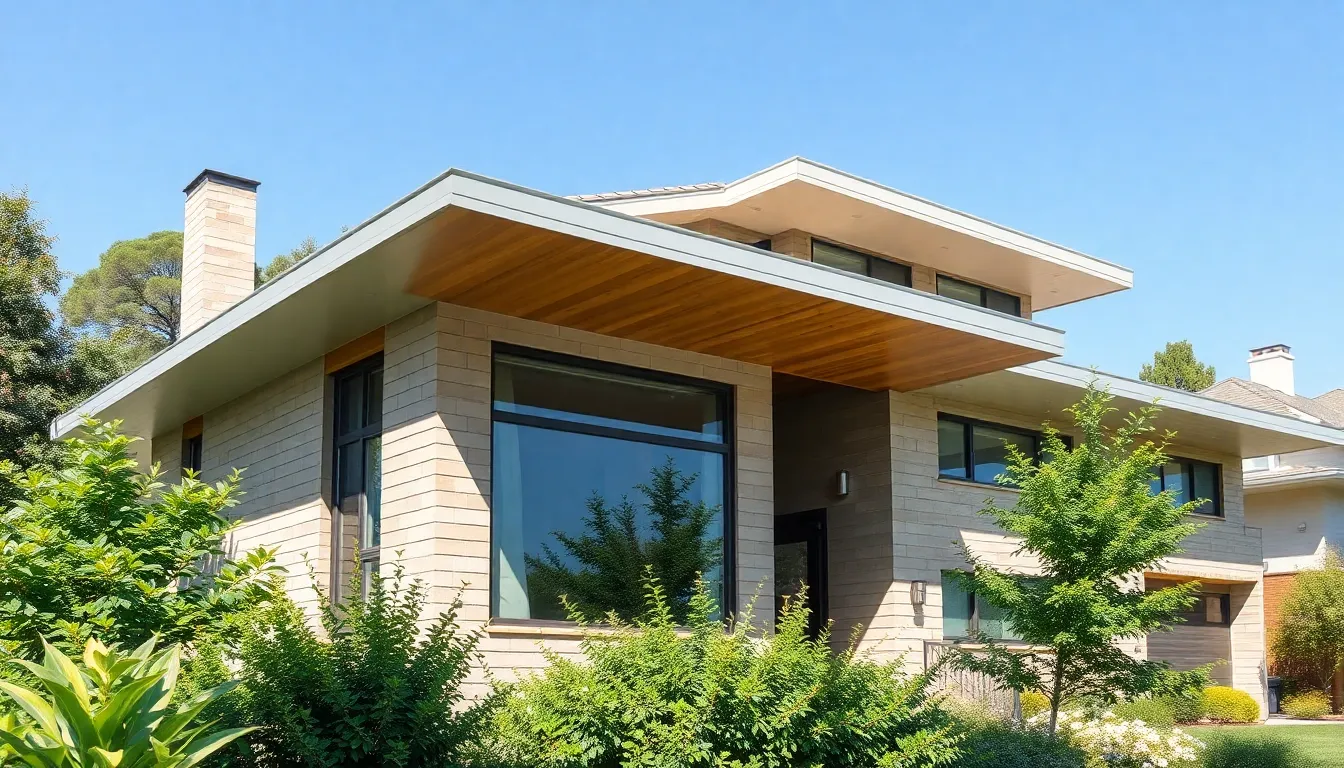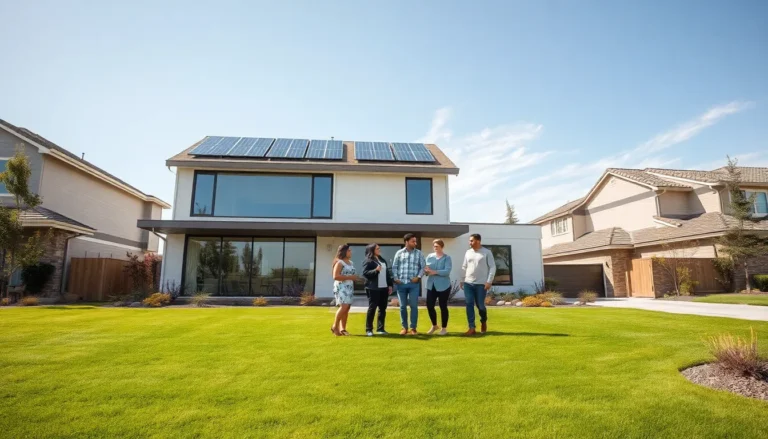Table of Contents
ToggleWhen it comes to saving energy, most people think of solar panels or energy-efficient appliances. But what if the answer was right above their heads? Roof overhangs might not seem like the star players in the energy-saving game, but these unsung heroes can significantly impact a home’s efficiency.
Understanding Roof Overhangs
Roof overhangs play a crucial role in improving a home’s energy efficiency. These architectural features significantly reduce energy consumption by regulating temperature and increasing comfort.
Definition and Purpose
A roof overhang is the portion of the roof that extends beyond the exterior walls. Its primary purpose is to provide shade and protection from the elements. By blocking direct sunlight, overhangs help maintain cooler indoor temperatures during summer months. They also shield windows and walls from rain, which can prevent moisture damage. This design element can reduce the load on heating and cooling systems, leading to lower energy bills.
Types of Roof Overhangs
Several types of roof overhangs exist, each serving different functions. Eave overhangs extend horizontally from the sides of the roof, offering shade and protection. Structured overhangs can be more decorative, adding aesthetic value while still providing functional benefits. Gabled overhangs, sloping outward from the roof’s peak, cater to homes with steep roof designs. Each type contributes uniquely to energy savings and overall home comfort while enhancing visual appeal.
The Role of Roof Overhangs in Energy Efficiency
Roof overhangs significantly enhance a home’s energy efficiency by reducing heat gain and utilizing passive solar design principles. These architectural features offer a range of benefits that contribute to a comfortable indoor environment.
Heat Gain Reduction
Heat gain reduction is one of the primary advantages of roof overhangs. These structures block direct sunlight during the hottest parts of the day, lowering indoor temperatures. By keeping sunlight away from windows, they minimize the need for air conditioning during summer months. Homes equipped with adequate overhangs can experience cooler interiors, translating into reduced energy consumption. Research indicates that roof overhangs can decrease air conditioning costs by up to 30 percent, showcasing their effectiveness in managing heat gain.
Passive Solar Design
Passive solar design is enhanced by the strategic placement of roof overhangs. This concept focuses on harnessing natural energy while minimizing reliance on mechanical systems. Optimal overhangs allow sunlight to enter during winter months, providing warmth and light without extra heating. During summer, the same overhangs effectively protect interiors from excessive heat. This dual functionality supports year-round energy savings and improved climate control. Implementing passive solar strategies, homeowners can reduce energy expenditure while increasing comfort levels in their living spaces.
Evaluating Roof Overhang Energy Savings
Roof overhangs significantly impact a home’s energy efficiency and overall comfort. They provide critical shading that helps reduce energy costs.
Impact on Heating and Cooling Costs
Roof overhangs play a vital role in lowering heating and cooling costs. By blocking direct sunlight during summer, these extensions reduce indoor temperatures, decreasing reliance on air conditioning systems. Studies indicate that strategically designed overhangs can cut cooling costs by up to 30 percent. Furthermore, in winter, they allow sunlight to enter, warming spaces naturally while preventing excessive heat gain during peak summer months. This dual functionality not only contributes to significant energy savings but also enhances year-round indoor comfort.
Case Studies and Data Analysis
Numerous case studies demonstrate the effectiveness of roof overhangs in energy conservation. One study analyzed homes across various climates and found an average of 15 percent reduction in energy consumption attributed to proper overhang installation. In another urban setting, data indicated a drop in cooling expenses by 25 percent among homes equipped with well-planned overhangs. An analysis of energy bills from multiple households highlighted these trends, revealing substantial differences in costs linked to roof design. Collectively, these data points emphasize the importance of roof overhangs in achieving energy-efficient homes while promoting sustainability.
Design Considerations for Optimal Energy Savings
Maximizing energy savings through roof overhangs requires careful attention to design elements. Key factors include the size and projection of overhangs, as well as the influence of climate and location.
Size and Projection of Overhangs
Selecting the right size and projection for roof overhangs directly impacts energy efficiency. Overhangs must extend far enough to significantly block sunlight during peak hours. As a rule, a projection of at least 2 feet is often recommended for homes in hotter climates. Adjusting the size based on window height and orientation also enhances effectiveness. For instance, south-facing windows benefit from deeper overhangs, preventing heat gain while still allowing winter sunlight to penetrate. Properly sized overhangs can reduce cooling costs by up to 30 percent, demonstrating the importance of thoughtful design.
Climate and Location Factors
Considering climate and location is vital when designing roof overhangs. Hot, sunny environments require longer overhangs to provide adequate shade. In comparison, colder climates benefit from smaller overhangs, allowing for winter sun to warm interiors. Regional weather patterns also influence decisions; locations with heavy rainfall may benefit from wider overhangs to protect walls and windows from moisture. Architects and builders should conduct a detailed analysis of local climate conditions to optimize energy efficiency. This tailored approach enhances thermal comfort and maximizes the benefits of roof overhangs throughout the year.
Conclusion
Roof overhangs are an essential yet often underestimated feature in energy-efficient home design. By providing shade and protection from the elements they significantly lower indoor temperatures and reduce reliance on heating and cooling systems. This not only leads to substantial energy savings but also enhances overall comfort.
With proper design considerations tailored to specific climates roof overhangs can optimize energy efficiency year-round. Their ability to block excessive heat in summer while allowing warmth in winter showcases their dual functionality. Embracing roof overhangs as a vital component of sustainable architecture can lead to lower energy bills and a more comfortable living environment. Investing in this architectural feature is a smart choice for homeowners looking to improve energy efficiency and promote sustainability.








